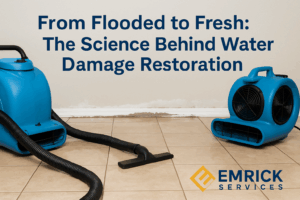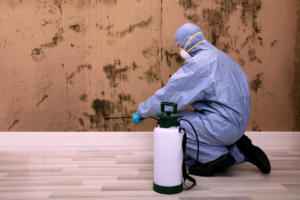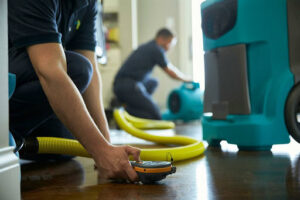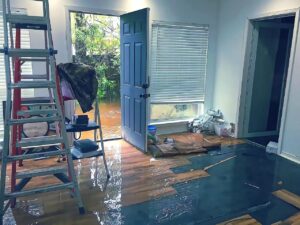Whether or not you live in a flood-prone area, sudden changes in climate or failures of manmade structures can put your home at risk of flood damage. Some flooding happens without warning. But sometimes, you may get up to a few days’ warning.
Fortunately, there are proactive measures you can take before the event to reduce the damage from a flood. Whether you live in a known flood zone or have received a warning that a flood may be on its way, keep reading to learn a few ways you can protect your home and your family.
What If You Receive a Flood Warning in Your Area?
Ideally, it is best to prepare for a flood long before you get a warning, especially if you live in an area that is a high-risk flood zone. If you don’t know the flood risks in your region, the Federal Emergency Management Agency (FEMA) publishes a map that plots areas by the level of flood risks. The color codes zones include:
Proactive Measures for Dealing with an Impeding Flood
A smart initial step in preparing for a flood is to identify how water might enter your home by observing surface runoff from recent heavy rains or snowmelt. As part of your examination, you should learn whether the water runs away from your home or toward it. Also, you should check all doors and windows for their potential to gather pools of water.
An emergency kit could become a vital tool in a flood situation. It should always be in your home, stored in an accessible place away from heat and potential damage. The kit should contain medications, bandages, anti-bacteria cream, copies of essential documents, and cell phone chargers. In addition, your emergency kit should have a minimum of three days of non-perishable food and water for each person in the household.
To properly prepare for the aftermath of a flood, you should purchase flood insurance. In addition, your proactive flood damage strategy should include the phone number of an established water damage restoration service like Emrick. However, you’ll need to contact your insurance company after a flooding event and request Emrick as your restoration specialist.
Preventive Measures After a Flood Warning
While all the preemptive measures are significant, the most critical parts of flood damage control are the steps you take after you get the flood warning. If you don’t have one already, you should immediately create a plan for your reaction to the flood and practice it until the steps come naturally.
Things to Do With a Few Days of Warning
With a few days’ warning, you can start preparing by:
Along with your valuables, you should elevate and stabilize your essential utilities like wiring, heating systems, propane tanks, sockets, and appliances. If the flood knocks out the power, you can reduce damage to your basement by setting up a sump pump with a battery-operated backup. Don’t get over-reliant on sandbags, as they lose effectiveness against fast-moving water.
Protecting Flood-prone Homes For the Future
In some cases, you may find it impossible to elevate certain heavy utilities like HVAC, refrigerators, and other household belongings. As a remedy, you could take a proactive measure by floodproofing your home, especially if you live in a flood-prone area. But some methods can be costly, such as:
However, there are some inexpensive floodproofing renovations that you can add to reduce flood damage, like applying coating and sealants to your walls, foundation, windows, and doorways, which generally provide 10 to 20 years of added protection.
Being Prepared for a Flood Pays Off
There’s often little we can do to stop an approaching flood. But you can take steps to mitigate the damage of floodwaters to your home. You can also document your valuables for reimbursement from your insurance companies in case damage does occur.
After your home suffers flood damage, the sooner you start the restoration process, the better. Having a reputable restoration company like Emrick Services on hand can help save you valuable time.








